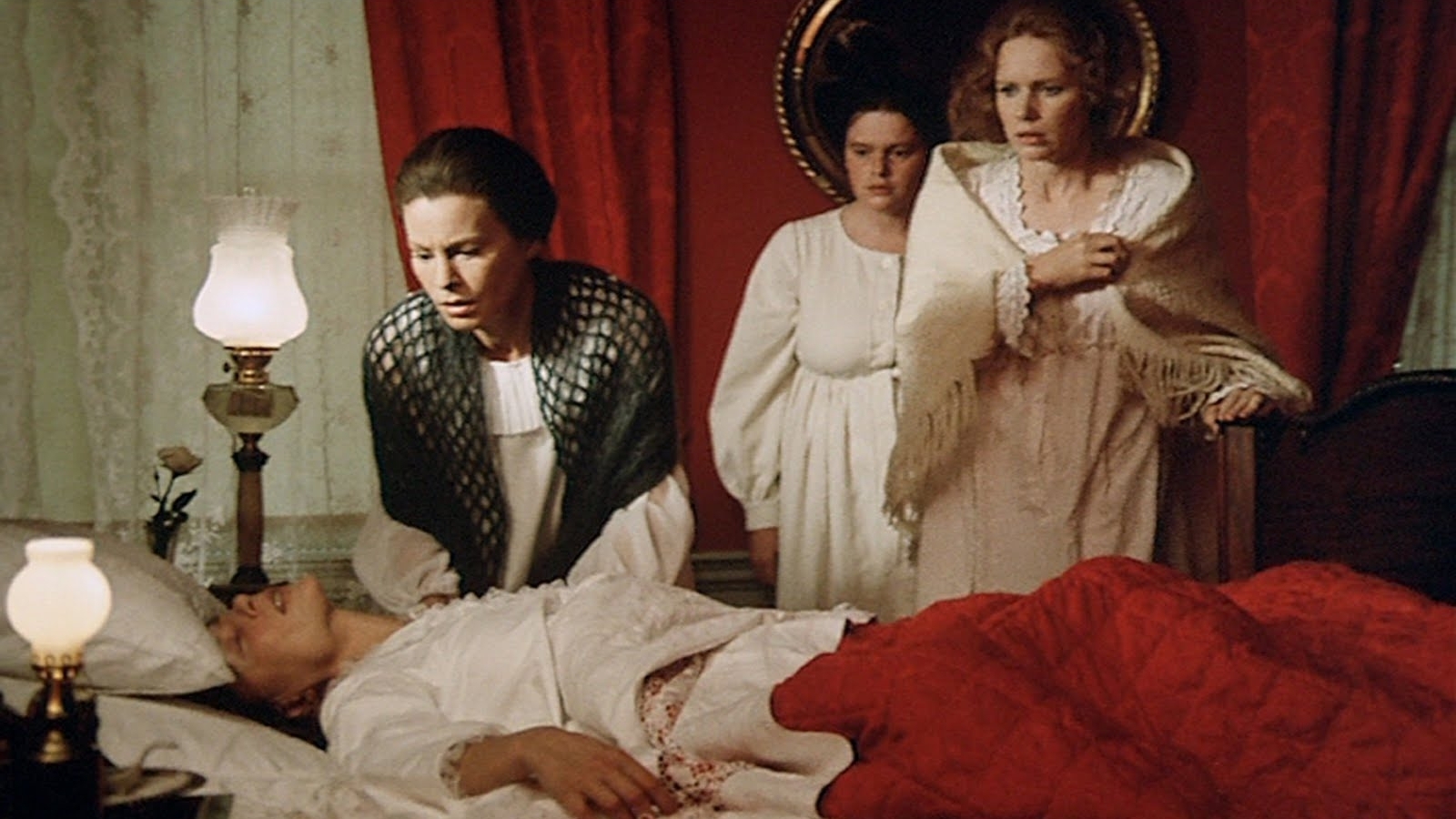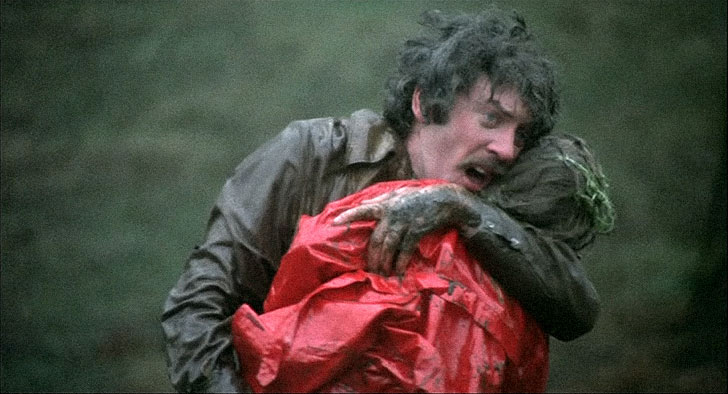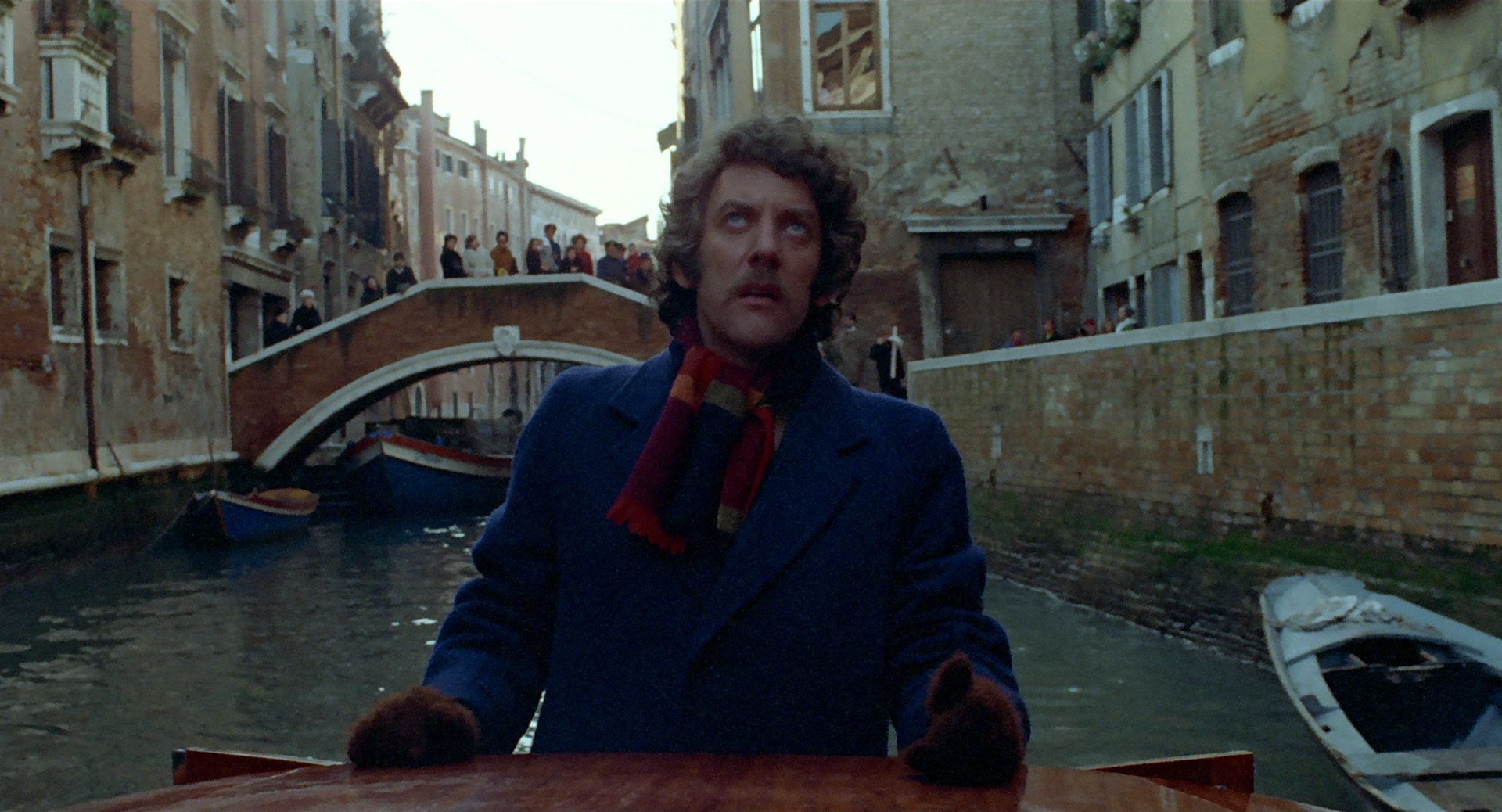In an article written long before directing his first feature, Antonioni recognized colour as a powerful and partly autonomous element of film language, “a changing of tone being caught up and carried over elsewhere, in play of tones created for example by the passage of clouds over the valley in John Ford’s Stagecoach.” These were the 1940s: Technicolor was in full swing, with deliberately over-saturated colour schemes typified by The Wizard of Oz and Gone with the Wind and an exhibitionist attitude towards their use. Antonioni called for control which would allow colour to transcend its function as décor, and participate in shaping “the psychological movement, the drama”.
Years later, in an interview for Cahiers du Cinema regarding the amount of blood in his film Pierrot le Fou, Godard insisted, “Not blood, red.” His treatment of red denounced the nature of violence and cruelty but, most importantly, linked cinematic instances into a fluid syntax of after-images that break away from linear narrative.
From the early days of cinema when each frame was painstakingly hand-tinted to create a recognizable filmic world, the emancipation of colour has unleashed a powerful visual tool which can serve as a syntactic generator of continuity and a semantic foundation for a film’s symbolic quality. Perhaps more than any other colour, red has established itself as a visual fuel often used to delineate different or contrasting realities. Besides its purely abstract dimension, red creates an arc of symbolic possibilities, from visceral associations to blood and the corporeal, to concepts of power, hatred, lust and the spiritual. Hot colours of latent violence in Spike Lee’s Do the Right Thing, the alienating red in Antonioni’s Red Desert, and the red-eyed supercomputer gone rogue all showcase red’s formal and symbolic polyvalency, as a photo developer that changes its appearance by reacting with different chemicals.
Cries and Whispers (1972)

There is hardly any blood in Bergman’s Cries and Whispers but by the end of the film, its distinctive red is carved into our eye’s retina as “the colour we see when we close our eyes against a bright light.” The highly-stylized film is bathed in hyper-saturated reds set against the drained faces of four women (three sisters and a maid) bound together by the expectance of death. Photographed by Bergman’s long term cinematographer Sven Nykvist, the walls, heavy curtains and rugs of the old mansion are given an oneiric quality drenched in reds which, in Bergman’s own words, represents the inside of the soul.
Visceral connection of colour to the flesh-rotting disease that has struck one of the sisters plays upon the film’s highly stylized production design. As the camera navigates the claustrophobic hallways and rooms heavily saturated with the tyrannical red, horrid screams of agony, repressed sexuality and hate, colour assumes an anthropomorphic character: it is an anatomic spatialization of angst. The interiority of the women is physicalized to the extreme as a pulsating labyrinth of caverns hypersensitive to touch. Somewhere between master-shots of sisters sitting in silence and violent close-ups, red ceases to be a colour and becomes a spatial synesthetic device which confuses whispers with kisses and screams with touches.
Europa (1991)

A different visual mechanism is at work in Lars von Trier’s Europa. Part of the director’s trilogy on the social and cultural schisms of post-war Europe, the film establishes a visual dichotomy between the achromatic portrayal of our hero’s journey through a war-torn Berlin and visual crescendos in colour marking realer-than-reality moments of emotional tension. Most importantly, colour is used as a rhythmic element that establishes the pace of the film.
As the black-and-white film unrolls into the seemingly endless night of a destroyed Germany, a US marine of German descent, played by Jean-Marc Barr, arrives in Berlin to help rebuild the country and “show some kindness” to the German people. His naive resolve to stay neutral disintegrates as he finds himself amidst a pro-Nazi terrorist conspiracy, one that reveals all the ruthlessness of having to pick sides.
Although Von Trier’s distinctive tendency to experiment with technical possibilities of the medium often results in overly formalistic approach to filmmaking, in Europa he is right on the mark. Here colour is a visual cue that enters the frame exactly when needed: to show Barbara Sukova’s radiant complexion and succulent lips or bring in an enriching layer of truthfulness as the main character encounters a moral dilemma. Masterfully shot by cinematographer Henning Bendtsen, the scene of a suicidal shaving with red droplets of blood spreading through the black-and-white rippling of water resembles a distant dream being intruded upon by reality. The sight of reds, together with Max von Sydow’s hypnotic voice which leads the viewer through the psychogeography of Europa, counts the slowing pulse of the film, as its hero fights for his last breath of air.
Don’t Look Now (1973)

’My sister hates it,’ says one of the characters about Venice, in Nicolas Roeg’s macabre Don’t Look Now. She says it’s like a city in aspic, wrapped over from a dinner party, where all the guests are dead or gone.” Roeg’s Venice is far removed from its canonized look as the ultimate romantic setting. Its canals and haunting architecture are soaked in earthy tones, a stage set for the appearance of red, as it traverses different chronological and spatial planes.
Colour is treated as the recurring element that tracks the narrative arc of film as two grieving parents, played by Donald Sutherland and Julie Christie, leave for Venice after their daughter drowns in an estate pond in England. The couple meet two elderly women, one of whom possesses the ‘second sight’ and claims to see the dead child.
The director uses colour in a symbolic manner loosely knit into a piece that flirts with the spiritual and the religious. The red stain on the slide, the little girl’s red hood floating in the water, the wife’s red boots, the father’s red scarf and finally, the muted reds of decaying rooftops and moldy walls of Venice paint a picture of a world haunted by the supernatural. Roeg, cinematographer turned director, gives an abundance of references, but doesn’t reveal much about their meaning. He breaks the linear narrative form by inserting twitchy tracking shots, flashbacks, flash-forwards, and zooms but uses colour to keep the film’s structural integrity. He flirts with the concepts of time and alternate realities, masterfully pioneered by Krzysztof Kieslowski, but the meaning behind these remains oblique. What we’re left with are moments of violence foreshadowed by the appearance of the red hood.






I always forget the circularity in Roeg’s Don’t Look Now- the little girl’s coat contrasted with that of the creature at the end of the film- so haunting. Also, think of Schindler’s list; the girl in the red coat represents the innocence of the victims of the Holocaust. So many excellent uses of the colour red in cinema, and these are brilliant examples.